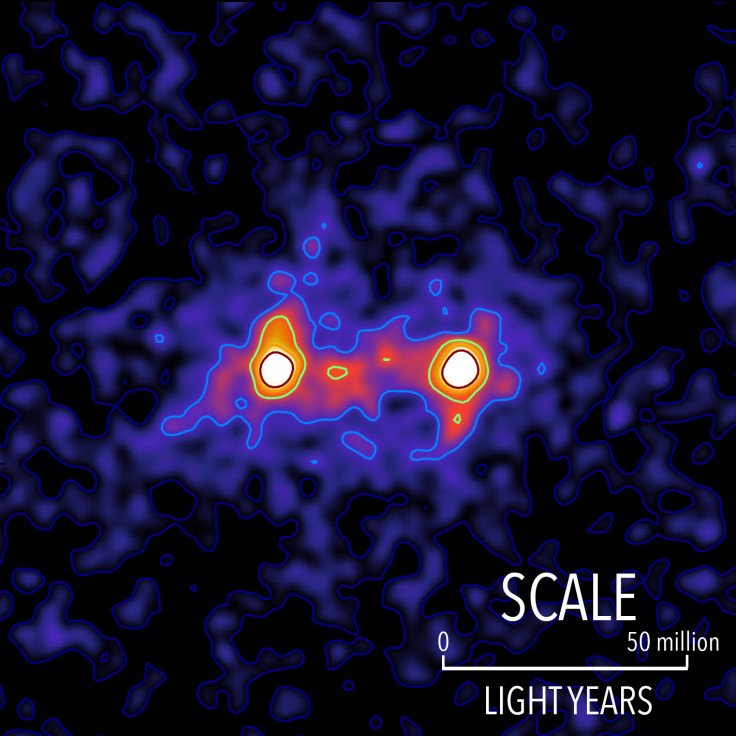First image of mysterious dark matter 'web' connecting galaxies released
Scientists have obtained a composite image of dark matter bridge between galaxies.

Scientists have released the first-ever composite image of a dark matter web connecting galaxies together. This strengthens the theory that galaxies across the whole universe are embedded in a "cosmic web", made mostly of dark matter.
Dark matter is an unidentified type of matter which comprises a little over 25% of the universe. It is distinct from distinct from other types of matter – dark energy, ordinary matter, and neutrinos.
Scientists actually know more about what the mysterious matter is not, rather than what it is. Over the years, they have found that dark matter doesn't shine, absorb or reflect light, and this has traditionally made it largely undetectable, except through gravity.
In a study in the Journal Nature published in 2014, scientists had traced out part of the dark matter web for the first time, by exploiting the fact that a quasar illuminated a nearby gas cloud, which in turn appeared to trace out filaments of dark matter.
However this new research, published in Monthly Notices of the Royal Astronomical Society is the first to create a composite picture using images of many different galaxies, to confirm predictions that galaxies across the universe are tied together through a cosmic web connected by dark matter.
Lead author Mike Hudson from the University of Waterloo (Canada) and co-author Seth Epps used a property of matter and light known as weak gravitational lensing to detect dark matter. This property causes the images of distant galaxies to warp slightly under the influence of an unseen mass such as dark matter.
They combined images from more than 23,000 galaxy pairs located 4.5 billion light-years away to create their final composite image and to map the presence of the dark matter they had detected. Their results show the dark matter filament bridge is strongest between systems less than 40 million light years apart from each other.
"By using this technique, we're not only able to see that these dark matter filaments in the universe exist, we're able to see the extent to which these filaments connect galaxies together," Seth Epps commented.
© Copyright IBTimes 2025. All rights reserved.





















